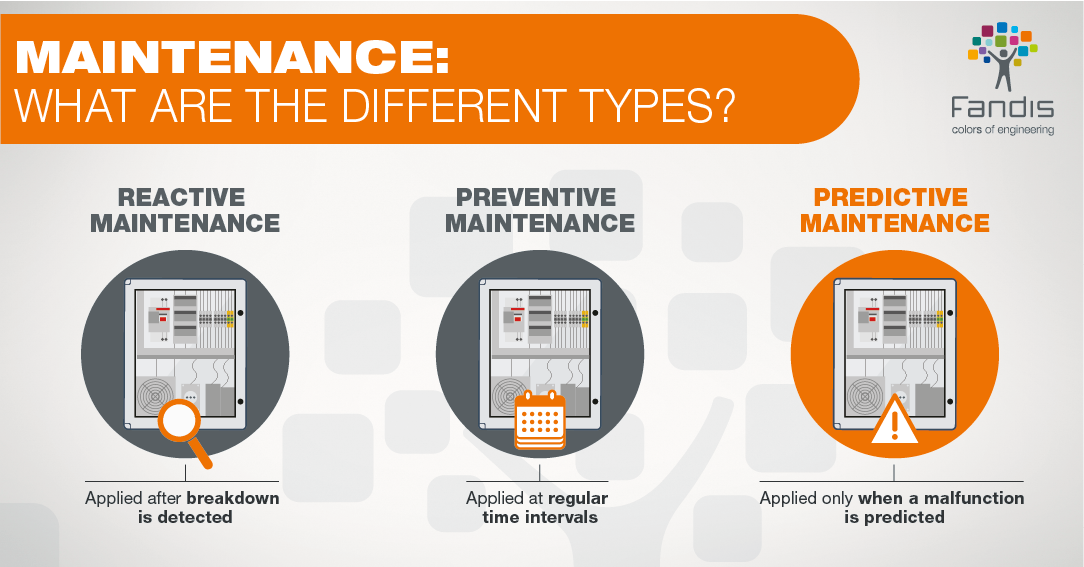Maintenance policies are divided into reactive, preventive, or predictive, with crystal clear semantic distinctions. Each of these “approaches to trouble” has advantages and limitations, according to the specifics of the application, and has historically been codified one after the other following the growing complexity of systems and the availability of new technologies.
Different approaches
Therefore, following a “historical” criterion, the classification is easy to understand:
- Reactive maintenance is activated upon the occurrence of a fault, has no costs as long as trouble does not occur, but it can weigh heavily in terms of service interruptions and reduced safety. To reduce intervention times, it is necessary to keep a stock of spare parts that have not been used for a long time. The knowledge tools for maintenance workers are only the guides (troubleshooting) developed during the design of the system.
- Preventive maintenance is cyclical maintenance, carried out by scheduling the replacement of components subject to wear before they fail or break. Maintenance is scheduled when equipment is already down, but it’s easy to waste components by being over-cautiousness or cause failure by incorrectly replacing spare parts.
- Predictive maintenance is carried out only when the condition of the component requires its replacement and for this reason, it’s also defined as “proactive”. It is the most recent technique, made possible only by the advent of IoT technology for the collection of data from the field and algorithms capable of deducing the degradation of a component. Its inclusion among the technologies enabling the Industry 4.0 (smart industry) paradigm has accelerated its diffusion in all industrial sectors. Also, in this case, the replacement of parts takes place only during the planned downtime.

Predictive maintenance in enclosures
Predictive maintenance initially concerned mechanical components, because they are subject to wear and are capable of providing obvious signs of degradation like vibrations during their operation. The measurement and analysis of the amplitude of vibrations over time and frequency make it possible to predict the approach of fault conditions.
For electrical cabinets, even more simply, information is obtained from the climatic parameters because many failures, both mechanical and electronic, cause local increases in temperatures.
At the same time, a loss of effectiveness of the ventilation due to accidental obstacles or dirtying of the filters can cause a temperature drift inside the cabinet and in turn, be the cause of failure.
The heart of the system is in the “cloud” level, where the data collected from the field is stored. The mind is in the algorithm, which through KPIs indicates the state of health of the parts or the occurrence of unexpected anomalies with traffic light logic. Measurements take place at the “edge” level, which must not interfere with the process under control.
Predictive maintenance devices
The first IIoT device dedicated to predictive maintenance in thermal management is Sensis by Fandis. Sensis, in addition to the measurements of the climatic quantities in the cabinet and the control of devices to maintain the optimal temperature level, is able to process information at the “edge” level and recognize anomalous events.
To find out more about Sensis and all our products for enclosures, visit our website fandis.com, browse our blog or send an email to support@fandis.com. Our staff will answer you as soon as possible.
Leave a Reply